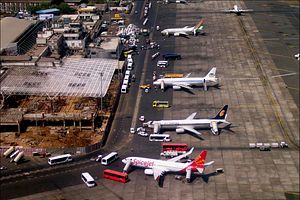India is rich in history, culture, and environmental diversity. So it makes sense that it ought to capitalize on this by allowing tourists and businesspeople to visit easily and spend money. India currently has a major tourism deficiency. In 2012, it received 6.58 million tourists, fewer than countries like Thailand and Malaysia. This is due to many factors: poor marketing, the difficulty of getting into India, and qualms about safety.
However, in a bid to boost tourism and people-to-people contacts, the Indian government has announced a new visa-on-arrival scheme in nine major airports. Under the scheme, nationals from 43 countries can travel to India for up to 30 days for “recreation, sightseeing, short duration medical treatment, casual business visits, and casual visits to meet friends or relatives.” It should be noted that applications must be made at least four days in advance with a $60 fee and photograph. Countries whose citizens may now enter India via this scheme include the United States, Germany, Japan, Russia, Brazil, Mexico, South Korea, Indonesia, Australia, New Zealand, and many others, most notably the mainland Southeast Asian countries. Many Southeast Asian nationals are interested in religious tourism.
Although tourism requires the construction of good infrastructure, such as airports and hotels, in order to expand, the prerequisites for tourism already exist in the form of natural and historical monuments. While these do require maintenance, they do not require construction from scratch or technology transfer, which are important in getting other industries started. What they do require, though, is good marketing and ease of access. India’s Tourist Minister Mahesh Sharma said that “the government’s objective is to boost tourism and this scheme’s implementation will send out a clear message that India is serious about making travel to the country easy.”
A subcontinent with thousands of years of history ought to be more accessible and host more tourists. This would boost India’s economy and global image. Here are some suggestions for India to boost tourism:
First, India should take popular tourist locations into account when constructing infrastructure such as roads, railroads, and airports. Not all sights are located in major cities and some are relatively distant from transportation hubs. These include pilgrimage sites such as Rishikesh and Bodh Gaya. Transportation into such places can improve.
Second, India ought to develop more thematic tours centered on food or the crafts. Japan has sake and sushi tours and France has wine tours. Likewise, India should consider developing more tea or spice tours and marketing them.
Third, India’s government ought to consider developing a single, large museum in New Delhi to serve as the “Louvre” of South Asia and other regions related to Indian civilization in Southeast, Central, and West Asia. Such a project would supersede the present National Museum. It would be an enormous and expensive undertaking but would be well worth it in both economic and cultural terms. The entire South-Central Asian region does not have a single world-class museum, especially one where Indic art is concentrated, cherished, and explained. It would make more sense to focus on one strong museum rather than attempting to fund several museums at once. Such an idea would fit well with Prime Minister Narendra Modi’s desire to create world class infrastructure in India and enhance the country’s efforts to preserve and promote its rich history.
Finally, India ought to promote multiple tourist destinations throughout the country in order to increase the volume and distribution of tourists. External tourism in India is heavily dominated by visits to the Taj Mahal, Rajput palaces in Rajasthan, and the large cities of Delhi and Mumbai. Each Indian state has a wealth of forts, natural beauty, and religious monuments and a concerted effort ought to be made to increase the number of tourists visiting these.

































